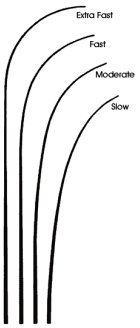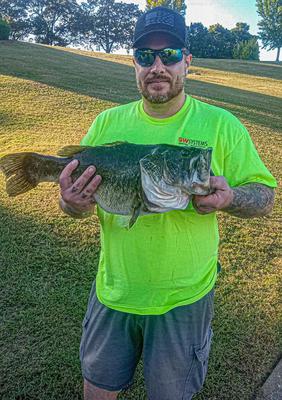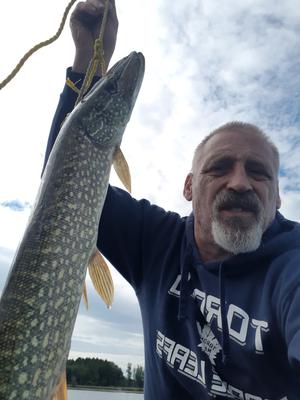Freshwater Fishing Rods
Action, Power, And Construction
Are you considering getting a new pole?
Would you like to know which types of freshwater fishing rods will match up best with certain techniques?
Of course, which is why I've put together these tips to help give you a better understanding of the major aspects to look for when shopping for the perfect rod.
There's a huge selection of freshwater fishing rods to choose from. There are rods for every species of fish and every style of fishing. They come in many sizes and there are so many manufactures to choose from.
So, where should you start?
Major Aspects About Fishing Rods
Knowing what species of fish you plan on targeting is one of the first things to determine when looking for freshwater fishing rods.
Also as to how you are planning to fish - from the bank or on a boat. And that's just getting started... Are you going to be dead sticking live bait, casting lures, trolling, ice fishing, and the list goes on.
Fishing rods are mainly categorized according to their length, action, and line/lure weight. Other things to consider is the construction and materials of fishing rods used for making the rod blanks, grip styles, and the guides.
Action Of Fishing Rods

The action is determined from how much the blank, or better known as the rod's shaft, bends and how fast it straightens back.
An extra fast heavy action rod will only flex on the top 1/4 of the tip. Fast action flex's at the upper 1/3. Moderate action flex's at 1/2 way. While a slow light action rod will flex to 1/3 of the bottom.
A stiff fast action rod will cast further and help control lures easier. Stiffer rods are well suited for jiggin and bottom fishing so that you can be able to feel more of the sensitivities and quickly set the hook with ease. It's also easier to pull out of heavy cover or snags.
A slow action rod is better suited for live bait presentations. The flexibility has the give needed to allow the fish to take the bait without quickly pulling the bait away off the hook.
Power Of Fishing Rods
The power of fishing rods are categorized as such:
- Ultra Light
- Light
- Medium Light
- Medium
- Medium Heavy
- Heavy
- Extra Heavy
Fishing Rod Reel Seats
Fishing rods have a reel seat. This is where the reel sits and is attached at. Some have two sliding rings which allows for adjusting the reel up and down along the grip. Others are fixed with one ring, some with the ring on the top end, while others have the ring on the bottom end, as the reel seat will sit in a slot on the opposite end of it.
Guides On Fishing Rods
There are two main types of guides, or "eyes", which is where the line passes through. The single footed and the double footed.



The single foot guide.
The double foot is more durable than the single which requires more wrap.
Some guides have rollers to allow the line to pass through
with less line friction and smooth casting.
The more guides on a rod, the better, which should keep your line from touching your rod without risking line abrasion when fighting fish.
Ferrules - Multi-Piece Fishing Rods
Some fishing poles consist of multiple pieces. They are very common for travel rods, making them easy to break down and pack away into a carrying case. These multi-piece rods are held together by ferrules. The open end is naturally called the female end, while the solid end is called the male.
There are also telescopic rods, also known as collapsible fishing rods, in which the rod slides inside itself. Those can be found as small as a writing pen like a pen fishing rod, or as large as big saltwater fishing rods.
To gain a better understanding, freshwater fishing rods can also be broke down into some of the following categories: baitcasting rods, spinning rods, spincasting, fly rods, trolling rods, and ice fishing rods. Look for our top picks and reviews for the best fishing rods.






Facebook Comments
Leave a comment, question or tip in the box below.